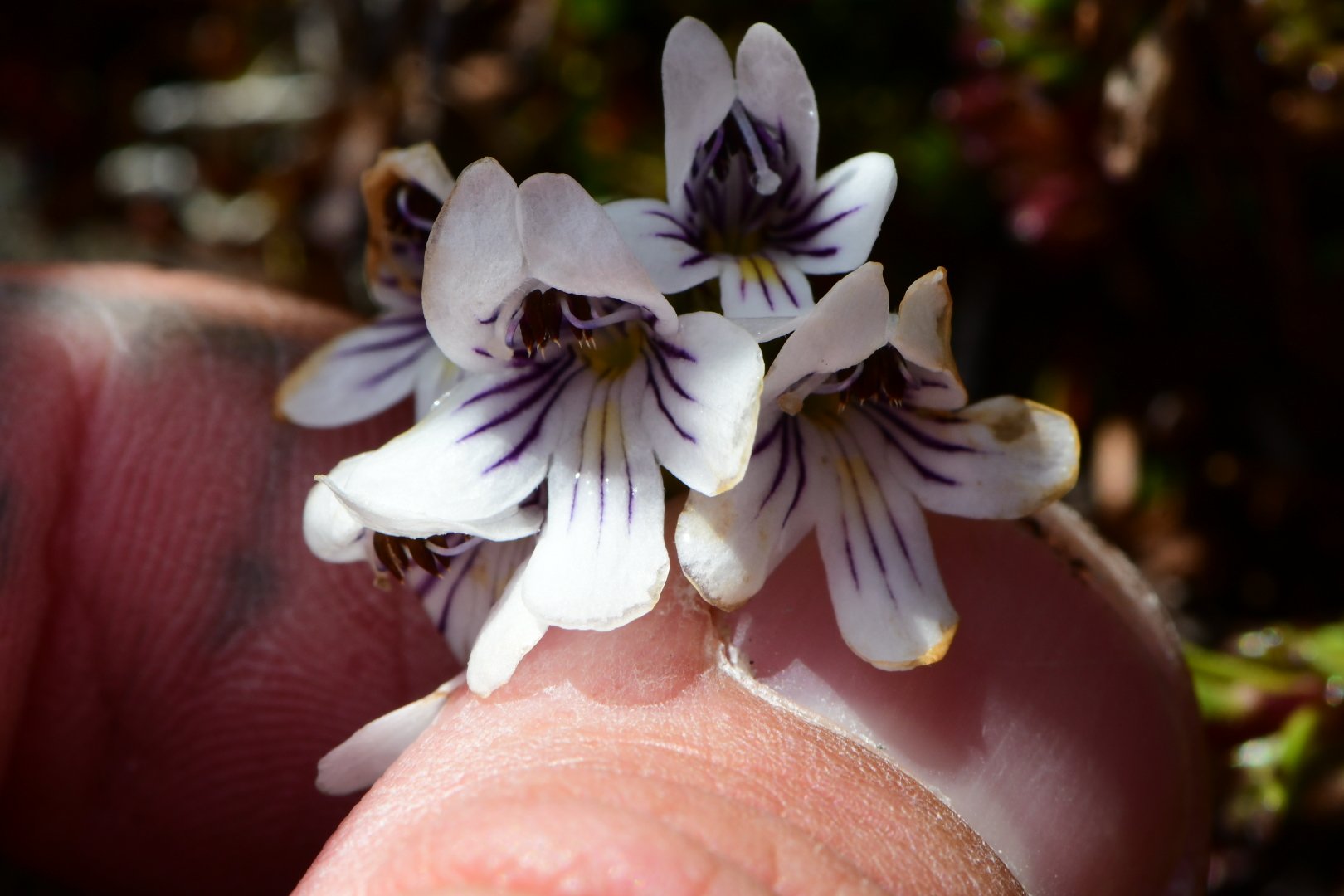Ancient Irises of Tasmania
Isophysis tasmanica is a dinosaur among Irises.
Ancient Irises, Ancient Soils..
Isophysis tasmanica is the sole species in the genus Isophysis, and the sole species in the subfamily Isophysidoideae - an early-diverging lineage in the Iris Family, Iridaceae.
It grows on acidic, nutrient-poor, water-logged sands in the mountains of Western Tasmania along with Blandfordia punicea (a red-flowered, bird-pollinated monocot in its own family in orde Asparagales) and the extremely bizarre Dracophyllum milliganii, of the blueberry family, Ericaceae. The entire habitat here is dominated by the smallest Eucalyptus species in the world, Eucalyptus vernicosa and "buttongrass", Gymnoschoenus sphaerocephalus (Cyperaceae), which forms a peat-like mat with its many dead and living roots. The soils it grows in here are basically white sands weathered from billion-year-old sandstone.
Unlike all other members of the Iris Family, Isophysis tasmanica produces a superior ovary, meaning the ovary (aka the fruit) matures above the point of attachment of the tepals/perianth.
I had been wanting to see this weird and beautiful bastard for a few years, especially after seeing the incredible amount of Iris diversity in South Africa and then reading about how DNA sequencing had determined that this species, Isophysis tasmanica, was the oldest extant lineage of the family, which makes sense, because many ancient lineages of plants Gondwanan relicts seem to have Western Tasmania as the only current place that they can be found, presumably having gone extinct everywhere else in their former range.
Filming and photographing this day, we got dumped on with intermittent ice storms. It would clear up and the sun would come out for five minutes, then it would raining freezing drizzle or tiny hail pebbles the next minute. This occurred on and off the entire morning, which is perfectly normal Tasmanian mountain summer weather from what I understand. Thanks to my friend @isophysis for the lead on the phenology at this particular location.
Full video out in three weeks. Pic 6 shows a burned "forest" of the shortest Eucalypt, Eucalyptus vernicosa, with Dracophyllum milliganii and Isophysis in the “understory".



































